 Canary Wireless have released their Digital Hotspotter device, which, as the name suggests, is a WiFi detection and analysis tool.
Canary Wireless have released their Digital Hotspotter device, which, as the name suggests, is a WiFi detection and analysis tool.
Unlike rival products that only detect signal availability and strength, this pocket sized marvel features a handy LCD display offering network ID, encryption status and channel data for multiple networks.
Using the Hotspotter is simple enough: whip it out of your pocket, hit the little grey button and watch as the scanner starts sniffing about for local wireless networks.
If it locates one, the screen will display a sequence starting with the network name, followed by the signal-strength readout (one to four bars), an indication of whether the signal is “Secure” or “Open” and the channel number of the detected signal. The whole process takes about ten seconds.
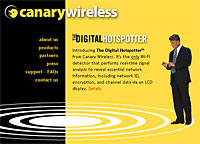 To scan for more networks, bash the button again.
To scan for more networks, bash the button again.
The manufacturers claim that Hotspotter should work up to about 200 feet outside (with a clear line of site) and user reports have confirmed this range.
Benjamin Kern, founder of Canary Wireless, put on his ‘enthusiastic’ hat and explained what’s great about his product: “Canary Wireless’ Digital Hotspotter device offers the only convenient solution that lets a user know exactly what networks are available and allows the user to determine whether it’s a good time to boot-up.
With its ability to detect encryption status, signal strength and channel information, the device also provides the easiest way for tech professionals to detect rogue access points, perform site surveys and troubleshoot interference.”
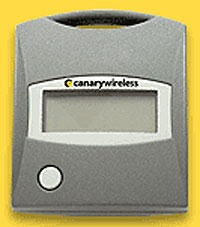 And while we can’t disagree with Ben’s summary, we wonder how long it will be before laptop makers start fitting WiFi sniffers into machine cases to let users seek out accessible networks without going through all the palaver of booting up.
And while we can’t disagree with Ben’s summary, we wonder how long it will be before laptop makers start fitting WiFi sniffers into machine cases to let users seek out accessible networks without going through all the palaver of booting up.
And if the next generation of VoIP phones doesn’t include built in sniffers, heck, we’ll eat Ben’s enthusiastic hat.
The Digital Hotspotter device is available at www.canarywireless.com and costs US$49.95 (£27/€39)
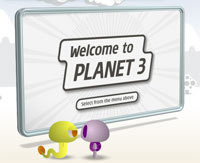 We’ve never quite been persuaded to move to 3, but these two price plans they’ve just announced sure look tempting.
We’ve never quite been persuaded to move to 3, but these two price plans they’ve just announced sure look tempting.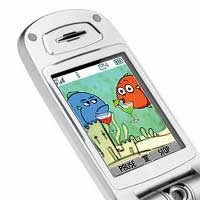 The second plan, “Talk, Text & Video 600”, is an enhancement to 3’s best selling plan, “Talk & Text 600”.As you’ve probably worked out, clever reader, this new plan bundles in 3’s video mobile services to the £35 (US$65/€50) a month package.
The second plan, “Talk, Text & Video 600”, is an enhancement to 3’s best selling plan, “Talk & Text 600”.As you’ve probably worked out, clever reader, this new plan bundles in 3’s video mobile services to the £35 (US$65/€50) a month package. Bob Fuller, 3 UK CEO swivelled on his heels and span out the corporate spin: “3 is the fastest growing network in the UK, we now have over 3 million 3G customers and we continue to lead the market for both value and video mobile services. With these new price plans 3 continues to set the pace for value in the UK mobile market. 3 was the first network to launch live, over-the-air, multi-player gaming, the first to stream concerts live over video mobile and first to launch quickplay video streaming of 3’s content.”
Bob Fuller, 3 UK CEO swivelled on his heels and span out the corporate spin: “3 is the fastest growing network in the UK, we now have over 3 million 3G customers and we continue to lead the market for both value and video mobile services. With these new price plans 3 continues to set the pace for value in the UK mobile market. 3 was the first network to launch live, over-the-air, multi-player gaming, the first to stream concerts live over video mobile and first to launch quickplay video streaming of 3’s content.”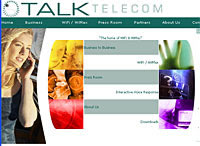 Irish VoIP solutions provider Cicero Networks has announced its first major telecom provider deal with Talktelecom Ltd, an independent, fully licensed General Telco Operator, based in Dublin.
Irish VoIP solutions provider Cicero Networks has announced its first major telecom provider deal with Talktelecom Ltd, an independent, fully licensed General Telco Operator, based in Dublin.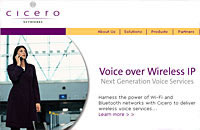 “Cicero Networks’ integrated end-to-end solution has given us a fast time-to-market in delivering a truly innovative and cost-effective wireless voice service,” buzzworded Talktelecom CEO, Johathan Mills. “Cicero lets us grow our existing business and enter new markets while delivering a substantial return on investment in a short time,” he added.
“Cicero Networks’ integrated end-to-end solution has given us a fast time-to-market in delivering a truly innovative and cost-effective wireless voice service,” buzzworded Talktelecom CEO, Johathan Mills. “Cicero lets us grow our existing business and enter new markets while delivering a substantial return on investment in a short time,” he added. Orange, the UK’s most popular mobile network, has wheeled out the initial line-up for its Great for Music handsets; the Nokia 6680 3G handset, Nokia 3230 and Sony Ericsson K300i handsets.
Orange, the UK’s most popular mobile network, has wheeled out the initial line-up for its Great for Music handsets; the Nokia 6680 3G handset, Nokia 3230 and Sony Ericsson K300i handsets.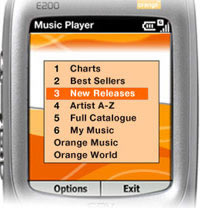 “The Official UK Chart’s decision to include music downloads from Orange World in its Chart demonstrates that the music industry has recognised the rising importance of mobile music downloads within the digital music sphere,” said Mark Ashford, head of music, Orange UK. “The advent of digital music downloads on mobile means that up-to-date phones also act as music players, making digital music accessible for one in three people in the UK.”
“The Official UK Chart’s decision to include music downloads from Orange World in its Chart demonstrates that the music industry has recognised the rising importance of mobile music downloads within the digital music sphere,” said Mark Ashford, head of music, Orange UK. “The advent of digital music downloads on mobile means that up-to-date phones also act as music players, making digital music accessible for one in three people in the UK.”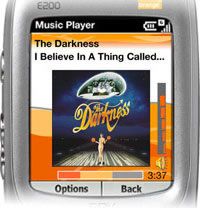 Orange will also be trying to look hip and radical while promoting their corporate brand at the forthcoming Glastonbury and T in the Park events.
Orange will also be trying to look hip and radical while promoting their corporate brand at the forthcoming Glastonbury and T in the Park events.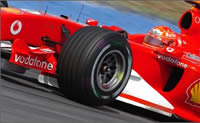 Vodafone Netherlands have added two further ‘channels’ to their current 20 plus channel UMTS (3G) service.
Vodafone Netherlands have added two further ‘channels’ to their current 20 plus channel UMTS (3G) service.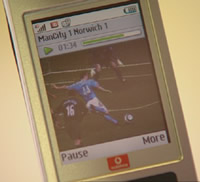 To date, Vodafone has EuroSport and RTL Nieuws exclusively and their addition brings the total number of TV channels available to 23, joining CNN, Playboy Channel, 2GOTV and MTV.
To date, Vodafone has EuroSport and RTL Nieuws exclusively and their addition brings the total number of TV channels available to 23, joining CNN, Playboy Channel, 2GOTV and MTV. As of early May, Dutch Vodafone customers will be able to say ‘nr!’ to saucy adult content offered via Vodafone live! from their mobile phone.
As of early May, Dutch Vodafone customers will be able to say ‘nr!’ to saucy adult content offered via Vodafone live! from their mobile phone.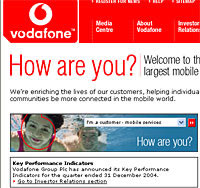 With hand-rubbing porn-shifters keenly eying up a growing – and lucrative – mobile multimedia market, it makes sense for telcos to be able to reassure parents that young Timmy’s new handset isn’t going to become a mobile gateway into the portals of smut.
With hand-rubbing porn-shifters keenly eying up a growing – and lucrative – mobile multimedia market, it makes sense for telcos to be able to reassure parents that young Timmy’s new handset isn’t going to become a mobile gateway into the portals of smut.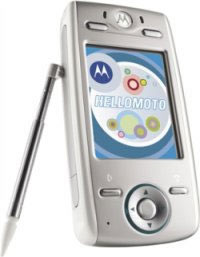 After the humiliating no-show of their much hyped (and currently in-limbo) iTunes phone at CeBIT earlier this month, Motorola have hit back with two new music phones.
After the humiliating no-show of their much hyped (and currently in-limbo) iTunes phone at CeBIT earlier this month, Motorola have hit back with two new music phones.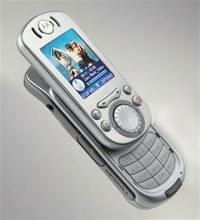 Sporting a ‘slider’ form factor, the E725 is a music player-cum-smartphone featuring a 1.9″ display (176 x 220 pixels resolution) with dedicated music keys, 5-band graphic equaliser and dual stereo speakers with virtual surround sound.
Sporting a ‘slider’ form factor, the E725 is a music player-cum-smartphone featuring a 1.9″ display (176 x 220 pixels resolution) with dedicated music keys, 5-band graphic equaliser and dual stereo speakers with virtual surround sound.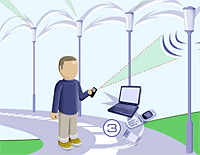 A British company has unveiled its cunning plan to roll out high-speed wireless networks and location-based services using street lampposts.
A British company has unveiled its cunning plan to roll out high-speed wireless networks and location-based services using street lampposts. Shrier believes that revenue could be generated by persuading companies to store their information on lampposts, paying Last Mile whenever someone accesses data using the MagicBook.
Shrier believes that revenue could be generated by persuading companies to store their information on lampposts, paying Last Mile whenever someone accesses data using the MagicBook.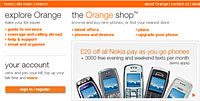 Mobile operator Orange has announced a GSM-based tracking service which it claims is both cheaper and easier to use than GPS technology.
Mobile operator Orange has announced a GSM-based tracking service which it claims is both cheaper and easier to use than GPS technology. Electronic Tracking Systems (ETS), makers of battery powered security tracking devices under the mtrack brand, is one of the first to pilot the product.
Electronic Tracking Systems (ETS), makers of battery powered security tracking devices under the mtrack brand, is one of the first to pilot the product. Commuters on London’s Tube network could soon be able to bellow out, “I’M ON THE TUBE!” if trials to introduce mobile and wireless Internet connections underground from 2008 get the green light.
Commuters on London’s Tube network could soon be able to bellow out, “I’M ON THE TUBE!” if trials to introduce mobile and wireless Internet connections underground from 2008 get the green light. LU director of strategy and service development, Richard Parry commented, “The process we launch today is to start getting information from the market about how we could best provide a mobile phones service”.
LU director of strategy and service development, Richard Parry commented, “The process we launch today is to start getting information from the market about how we could best provide a mobile phones service”. An LU spokesman added “Passengers would like to have mobile coverage at Tube stations but they are less keen to have it on trains”.
An LU spokesman added “Passengers would like to have mobile coverage at Tube stations but they are less keen to have it on trains”.